Comments / Questions (16)
![]() Linda wrote:
Linda wrote:
Having a problem with the increases, says all increases = 8 stitches per row , I only have 6 stitches increase. Not sure where the other two increase stitches come from.
10.06.2025 - 06:18DROPS Design answered:
Hi Linda, The increases for raglan are on both sides of the 4 marker-stitches, in each transition between the body and the sleeves = 8 increased stitches on each increase-row (every 2nd row). In addition, you begin increasing for the V-neck on the 3rd row (1 increased stitch by the neckline on each increase-row but here you increase every 4th row (i.e., row 3, then row 7, then row 11 etc.). Regards Drops team.
10.06.2025 - 06:34
![]() Matilda wrote:
Matilda wrote:
Förstår inte riktigt hur jag ska göra avmaskningarna i ärmarna. Räta på räta, o avig på avig. Hur gör jag detta?
21.09.2024 - 23:17DROPS Design answered:
Hei Matilda. Da feller du rettmaskene som rett og vrangmaskene som vrang. Ta gjerne en titt på hjelpevideoen: Hur man maskar av i resår (du finner videor til høyre / eller under bildet). mvh DROPS Design
23.09.2024 - 14:12
![]() Geo wrote:
Geo wrote:
Guten Tag, Welcher Schwierigkeitsgrad ist diese Jacke mit Raglan und V- Ausschnitt? Ich wollte falsches Patent stricken, habe eine längere Pause. Auch muss ich aufgrund der Maschenprobe umrechnen... herzlich und danke für eine Antwort.
20.09.2024 - 22:50DROPS Design answered:
Liebe Geo, lesen Sie aufmerksam die ganze Anleitung, schauen Sie die Videos / Lektion (siehe Tab oben), und wenn Sie Fragen haben, dann können Sie sie gerne hier stellen; Viel Spaß beim Stricken!
23.09.2024 - 07:46
![]() Parisa wrote:
Parisa wrote:
Hei. Jeg trenger veiledning i forbindelse med oppskrift på Drops Design 226-44 . Har kjøpt riktig garn og pinner fra deres nettbutikk. Kan noen svare på mine spørsmål? Takk på forhånd
08.01.2024 - 14:28DROPS Design answered:
Hej Parisa, ja skriv hvilken størrelse du strikker, hvor du er i opskriften, hvor mange masker du har og hvad du vil have hjælp med, så svarer vi så hurtigt som muligt :)
09.01.2024 - 15:33
![]() Fatma KISRANE wrote:
Fatma KISRANE wrote:
BONJOUR JE VOUDRAIS TRICOTER CE GILET EN AIGUILLE NUMERO 6 QUELLE TAILLE DEVRAIS JE PRENDRE POUR LE TRICOTER MERCI
17.09.2023 - 18:05DROPS Design answered:
Bonjour Mme Kisrane, ce modèle se tricote sur la base de 10 mailles x 14 rangs jersey = 10 x 10 cm; si vous n'avez pas cet échantillon, il vous faudra recalculer les explications sur la base de votre échantillon et des mesures du schéma. Retrouvez plus d'infos sur l'échantillon ici - vous pouvez également utiliser notre moteur de recherches pour trouver des modèles qui conviendrait à votre tension, en utilisant en référence votre nombre de mailles pour 10 cm. Bon tricot!
18.09.2023 - 15:55
![]() Fatma KISRANE wrote:
Fatma KISRANE wrote:
Bonjour je suis entrain de tricoter ce gilet en taille XXL j ai mis les marqueurs 3+9+19+9+2 est ce que je les ais bien positionner . et pourquoi il reste 2 mailles a la fin et pas 3 mailles comme aux debut merci
15.09.2023 - 19:51DROPS Design answered:
Bonjour Mme Kisrane, vos marqueurs doivent se présenter ainsi, chacun dans une maille: 2+1+8+1+18+1+8+1+2=42 m, 4 m avec chacune un marqueur, 2 m pour chaque devant, 8 m pour chaque manche et 18 m pour le dos. Bon tricot!
18.09.2023 - 08:00
![]() Fatma KISRANE wrote:
Fatma KISRANE wrote:
Bonjour je n est pas compris l augmentaion de mailles vert le col v quand ton tricote la bordure a quel endroit exactement doit ont l augmenter
12.09.2023 - 22:18DROPS Design answered:
Bonjour Mme Kisrane, on augmente pour l'encolure V à 2 mailles des bords; tricotez 1 m lisière au point mousse, 1 m endroit, faites 1 jeté (pour augmenter en début de rang), tricotez les mailles suivantes jusqu'à ce qu'il reste 2 mailles, faites 1 jeté et terminez par 1 m end et 1 m lisière au point mousse. Bon tricot!
13.09.2023 - 08:30
![]() Natalia GonzalezRehahn wrote:
Natalia GonzalezRehahn wrote:
Ich verstehe nicht, warum die Blende in zwei Teilen gestrickt und dann im Nacken zusammen genäht wird. Kann man nicht die Blendenmaschen von rechts unten bis durchgehend links unten auf einmal aufnehmen und die Blende in einem Stück arbeiten? Im Voraus vielen Dank.
01.02.2023 - 10:22
![]() Natalia GonzalezRehahn wrote:
Natalia GonzalezRehahn wrote:
Ich verstehe nicht, warum die Blende in zwei Teilen gestrickt und dann im Nacken zusammen genäht wird. Kann man nicht die Blendenmaschen von rechts unten bis durchgehend links unten auf einmal aufnehmen und die Blende in einem Stück arbeiten? Im Voraus vielen Dank.
01.02.2023 - 10:22DROPS Design answered:
Liebe Frau GonzalezRehahn, es würde dann sehr viele Maschen aufgefassen, aber gerne können Sie die Maschen von den beiden Blenden nuf auf einmal auffassen und stricken - beachten Sie, nur daß die Maschenanzahl das Bündchen passt. Viel Spaß beim stricken!
01.02.2023 - 14:18
![]() Sophie wrote:
Sophie wrote:
Hej! Ingen fråga om mönster, men...Har stickat denna jättefina kofta i Andes garn; vågar jag tvätta den i maskin på hand/ulltvätt? Centrifugera? Den är ganska tung. Vänligen Sophie.
19.01.2023 - 11:33DROPS Design answered:
Hei Sophie. Anbefaler å følge vaskeanvisningen. Håndvask, maks 30°C. Press/klem ut vannet og legg det flatt til tørk, men unngå å tørke plagget på underlag som suger til seg fuktighet, som for eksempel frottéhåndklær. Da kan plagget miste sin naturlige elastisitet. Om du ikke må vaske plagget, kan det fint bare henges ut til lufting, Andes er nærmest selvrensende. mvh DROPS Design
23.01.2023 - 08:28
Water Point#waterpointjacket |
|
 |
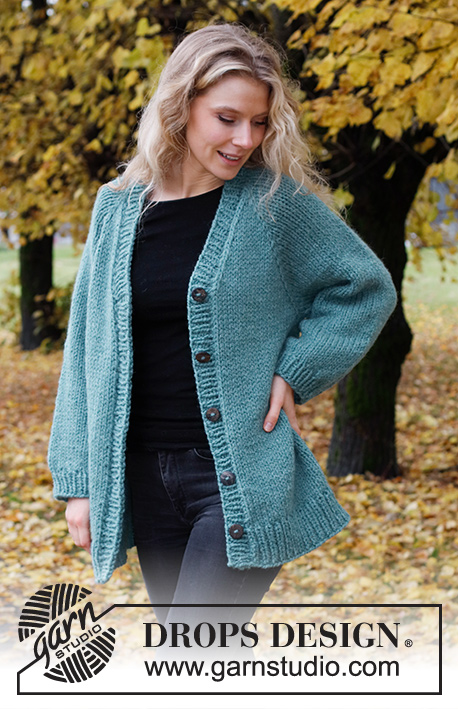 |
Knitted jacket in DROPS Andes. Piece is knitted top down with raglan and V-neck. Size XS – XXL.
DROPS 226-44 |
|
|
---------------------------------------------------------- EXPLANATION FOR THE PATTERN: ---------------------------------------------------------- GARTER STITCH (back and forth): Knit all rows. 1 ridge vertically = knit 2 rows. INCREASE TIP-1 (applies to sides of body): All increases are done from the right side! Work until 2 stitches remain before marker thread, make 1 yarn over, knit 4 (marker thread is in the middle of these 4 stitches), make 1 yarn over. On next row purl yarn overs twisted to avoid holes. Then work the new stitches in stocking stitch. INCREASE TIP-2 (evenly): To calculate how to increase evenly, use the total number of stitches on row (e.g. 102 stitches), minus edge stitches (e.g. 2 stitches) and divide the remaining stitches by number of increases to be done (e.g. 5) = 20. In this example increase by making 1 yarn over after every 20th stitch. On next row work yarn overs twisted to avoid holes. RAGLAN: All increases are done from the right side. Increase 1 stitch on each side of stitch with marker (= a total of 8 stitches increased on row): Increase 1 stitch by making 1 yarn over. On next row purl yarn overs twisted to avoid holes. Then work the new stitches in stocking stitch. DECREASE TIP (applies to mid under sleeves): Decrease 1 stitch on each side of marker thread as follows: Work until 3 stitches remain before marker thread and knit 2 together, knit 2 (marker thread is between these 2 stitches), slip 1 stitch knitwise, knit 1, pass slipped stitch over stitch worked. CAST-OFF TIP: To avoid a tight cast-off edge when casting off, you may use a larger needle. If this still is too tight make 1 yarn over after approx. every 6th stitch while casting off (cast off yarn overs as stitches). ---------------------------------------------------------- START THE PIECE HERE: ---------------------------------------------------------- JACKET - SHORT OVERVIEW OF THE PIECE: Work yoke back and forth on circular needle from mid front, work top down. Now divide yoke for body and sleeves. Work body back and forth on circular needle. Work sleeves in the round on double pointed needles/a short circular needle. Work bands at the end. YOKE: Cast on 36-38-38-40-40-42 stitches on circular needle size 9 mm with DROPS Andes. Purl 1 row from wrong side. Insert a marker after 18-19-19-20-20-21 stitches (= mid back on back piece), measure yoke from this marker! Now insert 4 markers in the piece without working the stitches. Insert markers in a stitch between body and sleeves: Skip the 2 first stitches, insert a marker in next stitch, skip the next 8 stitches, insert a marker in next stitch, skip the next 12-14-14-16-16-18 stitches, insert a marker in next stitch, skip the next 8 stitches, insert a marker in next stitch. 2 stitches remain on round after last marker. Now work in stocking stitch back and forth with 1 edge stitch in GARTER STITCH in each side – read explanation above, at the same time on first row begin increase for raglan and on third row begin increase for V-neck – increase as explained below. REMEMBER THE KNITTING TENSION! RAGLAN: On first row increase for RAGLAN – read explanation above. Increase like this every other row 15-15-17-18-19-21 times in total. V-NECK: On third row begin increase for V-neck. Increase as follows from right side: 1 edge stitch in garter stitch, knit 1, make 1 yarn over, work until 2 stitches remain on needle, make 1 yarn over, knit 1, 1 edge stitch in garter stitch. On next row purl yarn overs twisted to avoid holes. Increase like this every 4th row 5-6-6-7-7-8 times in total. When all increases for raglan and V-neck are done, there are 166-170-186-198-206-226 stitches on row. Work until piece measures 23-23-25-27-29-31 cm from marker mid back. Now divide piece for body and sleeves as follows: Work the first 22-23-25-27-28-31 stitches (= front piece), slip the next 40-40-44-46-48-52 stitches on a stitch holder for sleeve, cast on 4-6-6-6-8-8 new stitches on needle (= in the side under sleeve), work the next 42-44-48-52-54-60 stitches (= back piece), slip the next 40-40-44-46-48-52 stitches on a stitch holder for sleeve, cast on 4-6-6-6-8-8 new stitches on needle (= in the side under sleeve) and work the last 22-23-25-27-28-31 stitches. Now finish body and sleeves separately. NOW MEASURE PIECE FROM HERE! BODY: = 94-102-110-118-126-138 stitches. Insert 1 marker thread in the middle of the new stitches cast-on in the side under the sleeves (= 2-3-3-3-4-4 new stitches on each side of marker thread). Move the marker threads upwards when working; they should be used for increase later in the sides. Continue with stocking stitch and 1 edge stitch in garter stitch in each side towards mid front. When piece measures 5 cm from division, increase 1 stitch on each side of marker thread in each side - read INCREASE TIP-1. Repeat increase when piece measures 15 cm = 102-110-118-126-134-146 stitches. Work until piece measures 32-34-34-34-34-34 cm from division. Knit 1 row from right side while increasing 5-5-7-7-9-9 stitches evenly - read INCREASE TIP-2 = 107-115-125-133-143-155 stitches. Switch to circular needle size 7 mm. Work rib follows (begin from wrong side): 1 edge stitch in garter stitch, (purl 1/knit 1) until 2 stitches remain, purl 1, 1 edge stitch in garter stitch. Continue back and forth like this until rib measures 7 cm. Cast off with knit over knit and purl over purl and garter stitch over garter stitch, read CAST-OFF TIP. Jacket measures approx. 66-68-70-72-74-76 cm from shoulder and down. SLEEVES: Slip the 40-40-44-46-48-52 stitches from stitch holder in one side on a short circular needle/double needles size 9 mm and pick in addition up 1 stitch in each of the 4-6-6-6-8-8 new stitches cast on in the side under sleeve = 44-46-50-52-56-60 stitches. Insert a marker thread in the middle of the new stitches under sleeve (= 2-3-3-3-4-4 new stitches on each side of marker thread). Move the marker thread upwards when working - marker threads should be used for decrease mid under sleeve. Continue in the round in stocking stitch. When piece measures 2 cm, decrease 1 stitch on each side of marker thread under sleeve - read DECREASE TIP. Decrease like this every other row 6-6-8-8-10-11 times in total, then every 4th row 1 time in total in all sizes = 30-32-32-34-34-36 stitches. Work until sleeve measures 35-35-34-32-31-29 cm (shorter measurements in the larger sizes because of longer yoke). Switch to double pointed needles size 7 mm. Work rib (knit 1/purl 1) in the round for 4 cm. Cast off with knit over knit and purl over purl - remember CAST-OFF TIP. Sleeve measures 39-39-38-36-35-33 cm from division. Work the other sleeve the same way. RIGHT BAND: Begin from right side at the bottom on right front piece with circular needle size 7 mm and DROPS Andes. Pick up 93-109 stitches inside 1 edge stitch in garter stitch along right front piece and up to mid back on back piece (number of stitches must be divisible by 2 + 1 stitch). Purl 1 row from wrong side – increase with yarn over right were first decrease for V-neck begun by working as follows: * Purl 1, make 1 yarn over *, work from *-* 2 times (= 2 stitches increased) – on next row work yarn overs twisted to avoid holes. Now work rib as follows from right side: Work 1 edge stitch in garter stitch, * knit 1, purl 1 *, work from *-* until 2 stitches remain on needle, knit 1 and finish with 1 edge stitch in garter stitch. Continue rib back and forth like this until band measures 1½-2 cm. Now decrease for 5 buttonholes evenly in all sizes. Place top buttonholes approx. 1 cm below were decrease for V-neck began, and bottom buttonhole approx. 7 cm from bottom edge. 1 buttonhole = make 1 yarn over and work 2 stitch together. Continue with rib until band measures approx. 4 cm. Cast off stitches with knit over knit and purl over purl. LEFT BAND: Begin from right side mid back of neck with circular needle size 7 mm and DROPS Andes. Pick up 93-109 stitches inside 1 edge stitch in garter stitch along edge and down along left front piece (number of stitches must be divisible by 2 + 1 stitch). Purl 1 row from wrong side – increase with yarn over right were first decrease for V-neck begun by working as follows: * Purl 1, make 1 yarn over *, work from *-* 2 times (= 2 stitches increased) – on next row work yarn overs twisted to avoid holes. Now work rib as follows from right side: Work 1 edge stitch in garter stitch, * knit 1, purl 1 *, work from *-* until 2 stitches remain on needle, knit 1 and finish with 1 edge stitch in garter stitch. Continue rib back and forth like this until band measures approx. 4 cm - adjust length according to right band. Cast off stitches with knit over knit and purl over purl. ASSEMBLY: Sew the buttons on to left band. Sew band together mid back. |
|
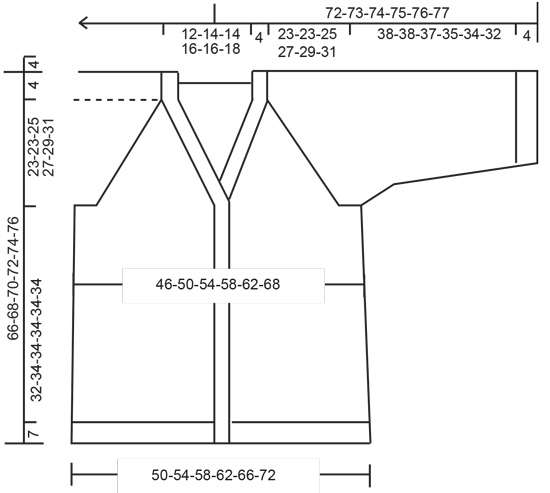
|
|
Have you finished this pattern?Tag your pictures with #dropspattern #waterpointjacket or submit them to the #dropsfan gallery. Do you need help with this pattern?You'll find 31 tutorial videos, a Comments/Questions area and more by visiting the pattern on garnstudio.com. © 1982-2025 DROPS Design A/S. We reserve all rights. This document, including all its sub-sections, has copyrights. Read more about what you can do with our patterns at the bottom of each pattern on our site. |
|







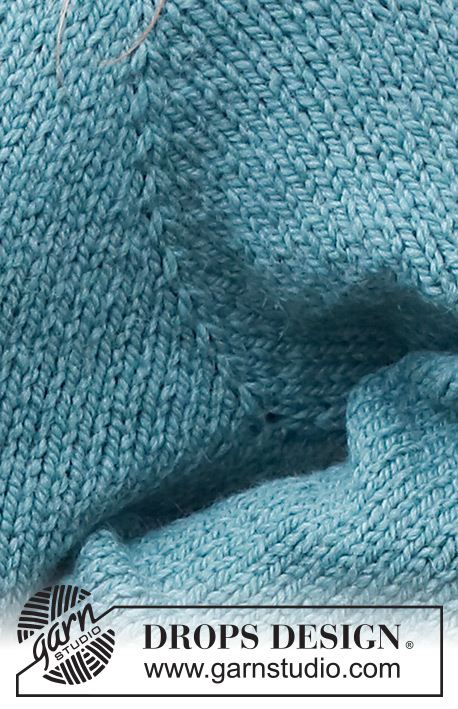

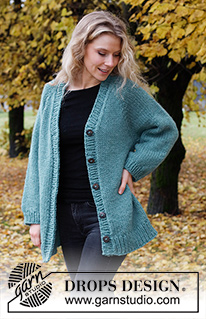
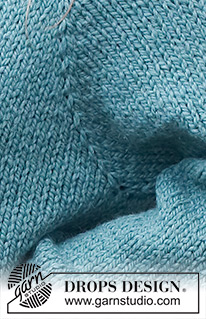

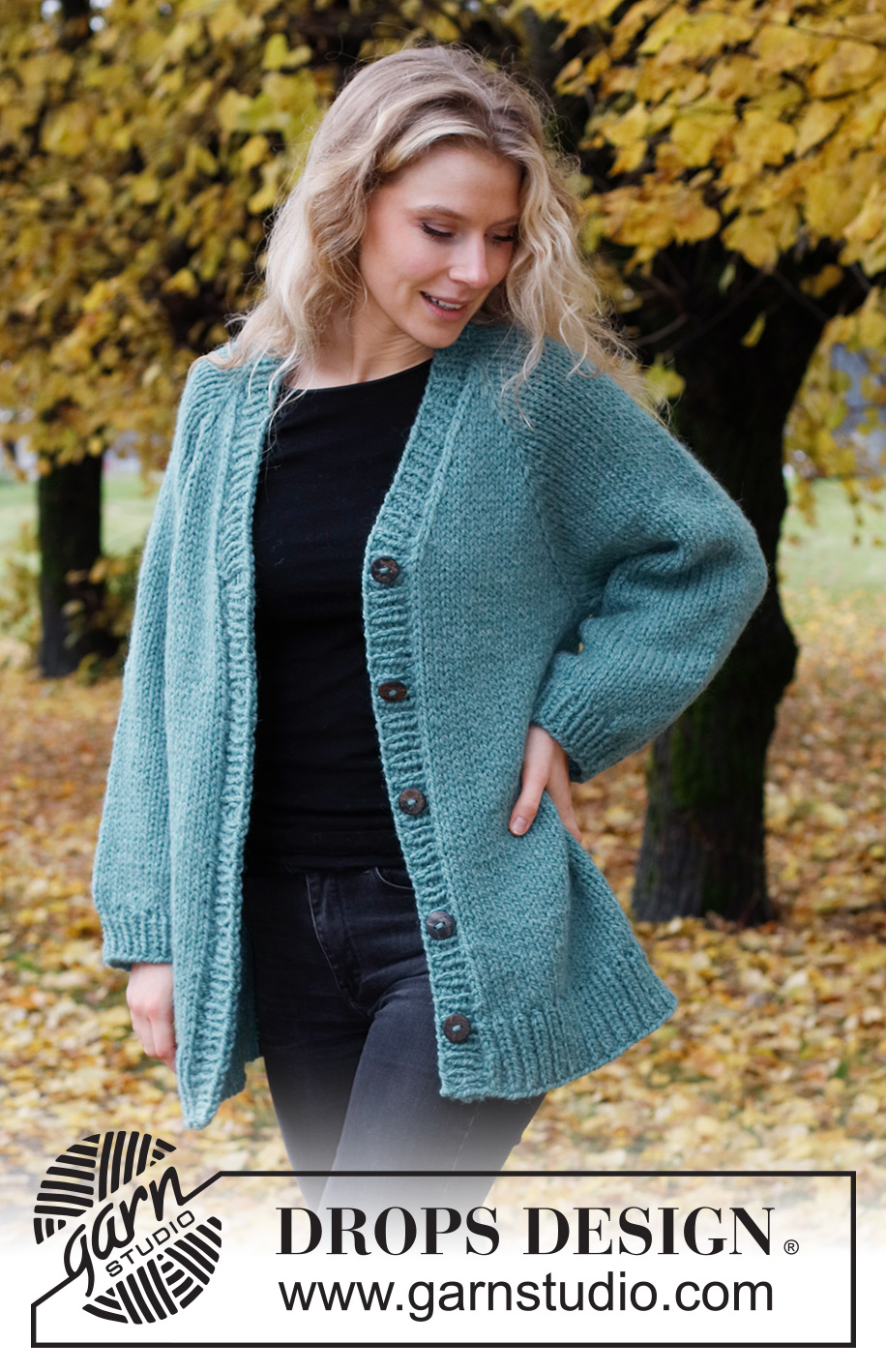
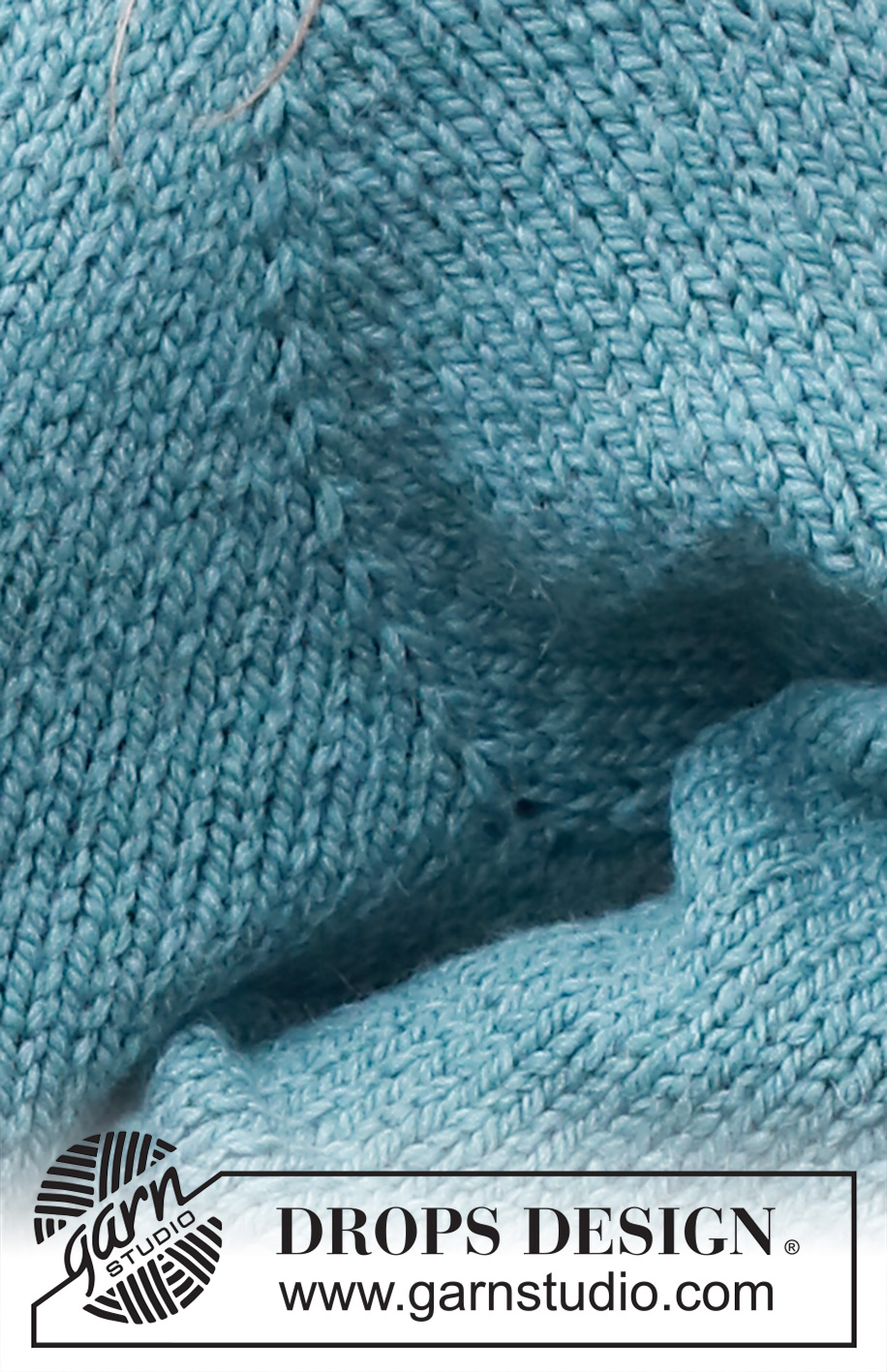

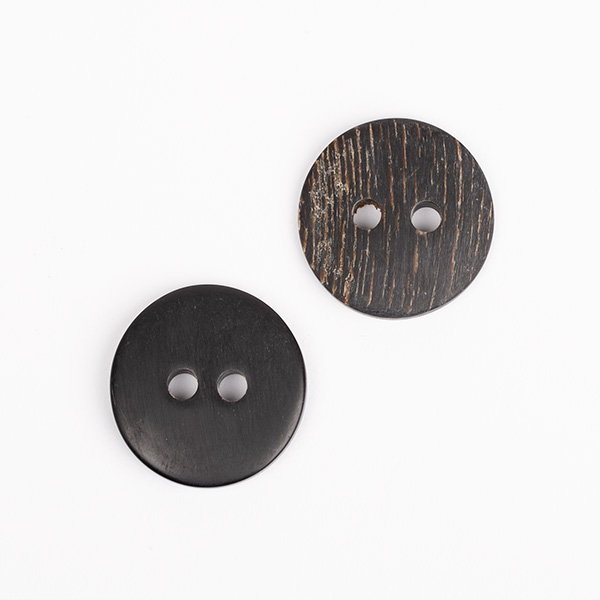

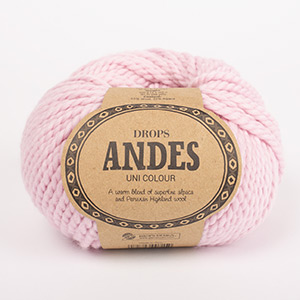
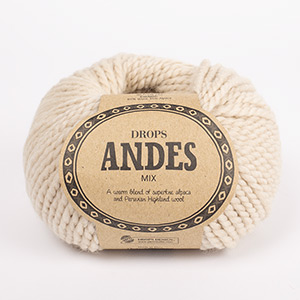





















































Post a comment to pattern DROPS 226-44
We would love to hear what you have to say about this pattern!
If you want to leave a question, please make sure you select the correct category in the form below, to speed up the answering process. Required fields are marked *.